Posts Tagged: Jason Bond
Bohart Museum of Entomology: 'Be Curious'
It's Saturday, Feb. 10 and it's the 13th annual UC Davis Biodiversity Museum Day at the Bohart Museum of Entomology. It's a Super Science Day...
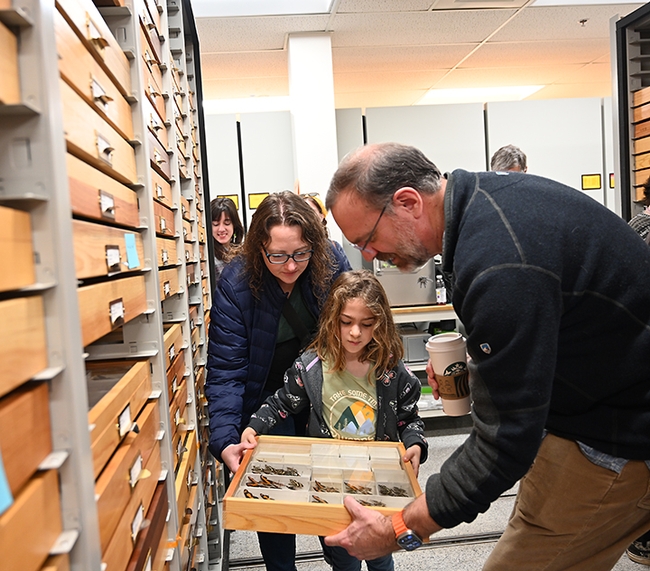
UC Davis professor Jason Bond, director of the Bohart Museum of Entomology, shows butterly specimens to Woodland residents Olive Smith, 8, and her mother Sarah Smith. (Photo by Kathy Keatley Garvey)
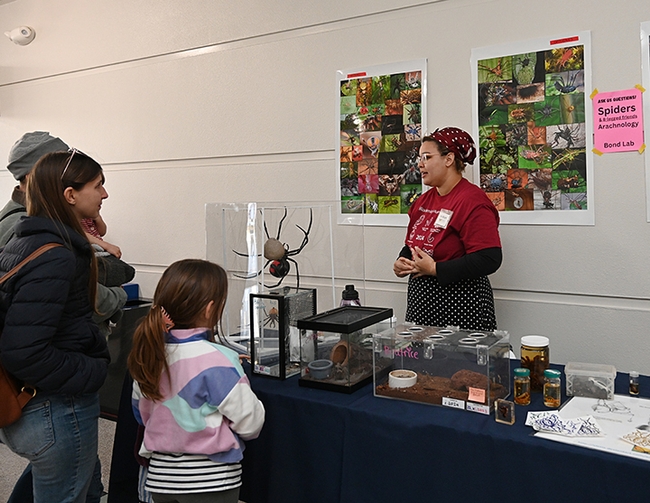
Doctoral student Iris Quayle of the Jason Bond lab answers questions about spiders at the Biodiversity Museum Day at the Bohart Museum of Entomology. (Photo by Kathy Keatley Garvey)
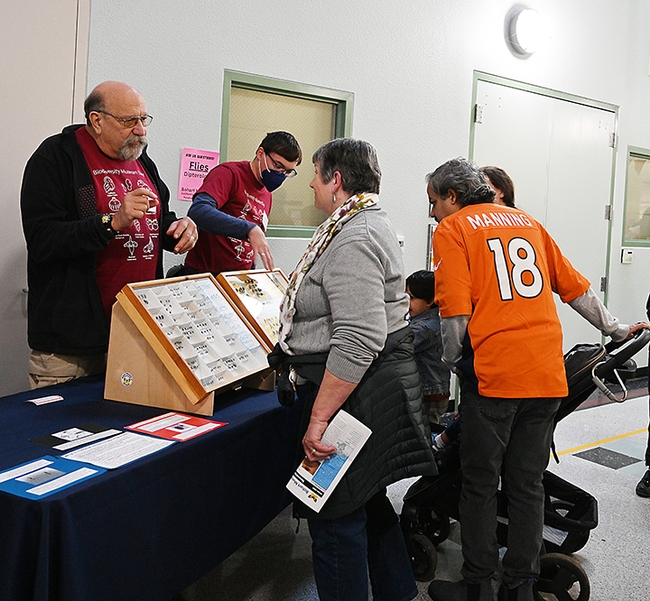
Forensic entomologist Robert Kimsey (left) of the Department of Entomology and Nematology and postdoctoral researcher Severyn Korneyev, a Ukrainian entomologist who studies flies, answer questions from visitors at the Bohart Museum open house. Korneyev holds a joint appointment with the UC Davis Department of Entomology and Nematology and the California Department of Food and Agriculture. (Photo by Kathy Keatley Garvey)
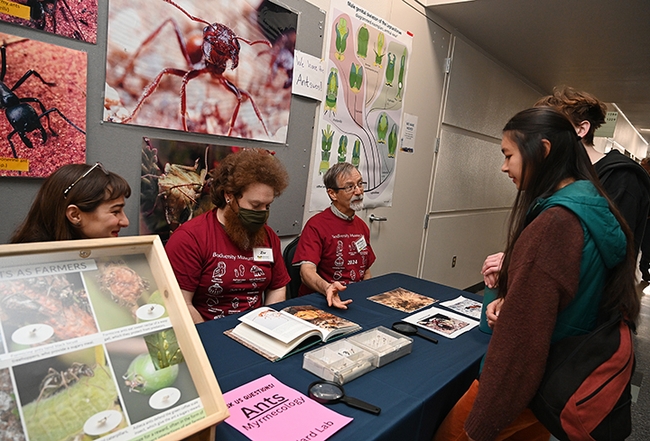
Professor and ant specialist Phil Ward and lab members answer question about ants. With him are doctoral candidate Ziv Lieberman and research assistant Brittany Kohler, who seeks to enroll as a doctoral student at UC Davis. (Photo by Kathy Keatley Garvey)
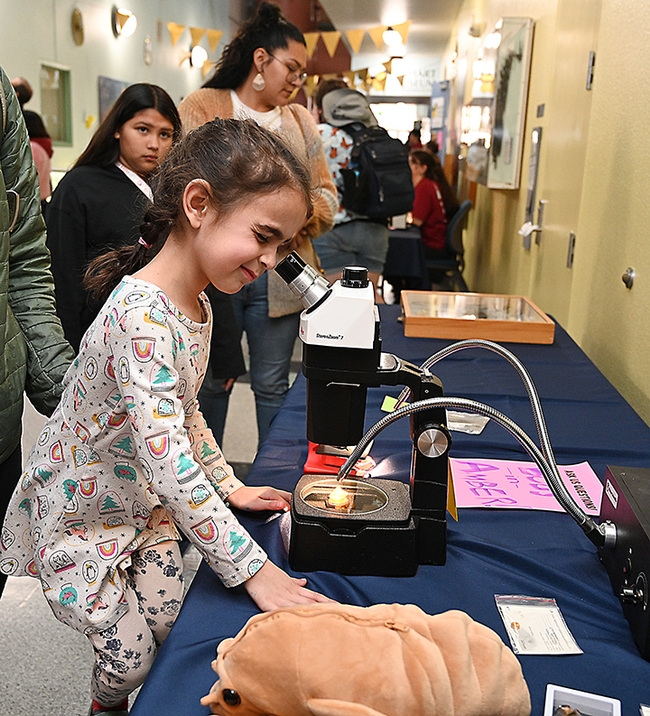
Margo Rubin, 5, squints to get a better look through the microscope. (Photo by Kathy Keatley Garvey)
'The Girl in the Red Boots' Has Retired
"The Girl in the Red Boots" has retired. That would be UC Davis distinguished professor Lynn Kimsey, director of the Bohart Museum of...
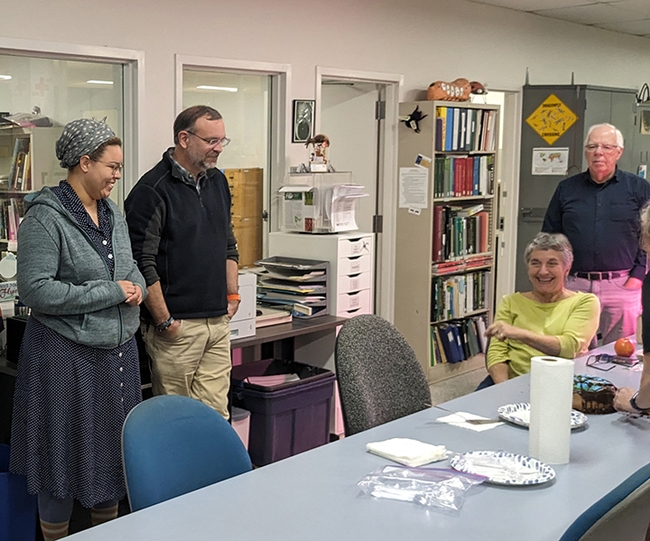
Professor (and now retiree) Lynn Kimsey (seated), former director of the Bohart Museum of Entomology, is honored at a birthday celebration on Feb. 1. With her from left are doctoral student Iris Quayle of the Bond lab; Professor Jason Bond, newly selected director of the Bohart Museum; and entomology researcher Tom Zavortink of the Bohart. (Photo by Tabatha Yang)
UC Davis Spider Experts Analyze Genetics of Newly Described Spider That Engages in Lekking Behavior
Have you heard about the newly described kite spider species in Madagascar that is drawing worldwide attention for its lekking behavior? In...
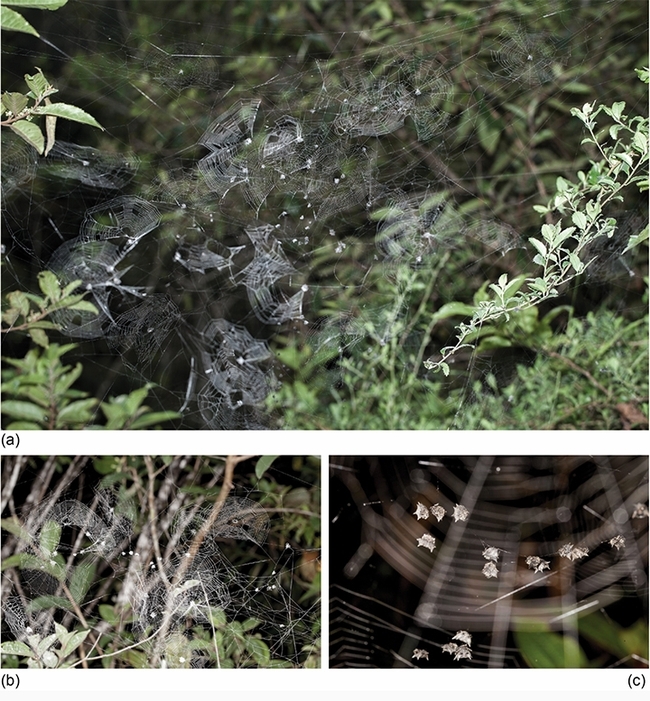
Colonial Isoxya manangona n. sp. from Andasibe, Madagascar. (a) A part of a colony with 79 spiders in 41 webs (image shows 23 webs). (b) A detail from another colony where females are in their individual webs (image shows 14 of the 16 webs in the colony) while males hang on line in between webs (image shows 12 males). (c) A detail of another colony showing male leks. These males showed no overt intrasexual aggression that would be typical of solitary spiders. (Insect Systematics and Diversity)
The Myth of the Brown Recluse Spider in California
Have you ever been bitten by a brown recluse spider in California? It's a myth. There are no established populations of Loxoceles reclusa...
The Many-Legged Wonders at the Bohart Museum of Entomology
Last year the Bohart Museum of Entomology hosted an open house themed "Eight-Legged Wonders." It featured primarily spiders. Next week the...
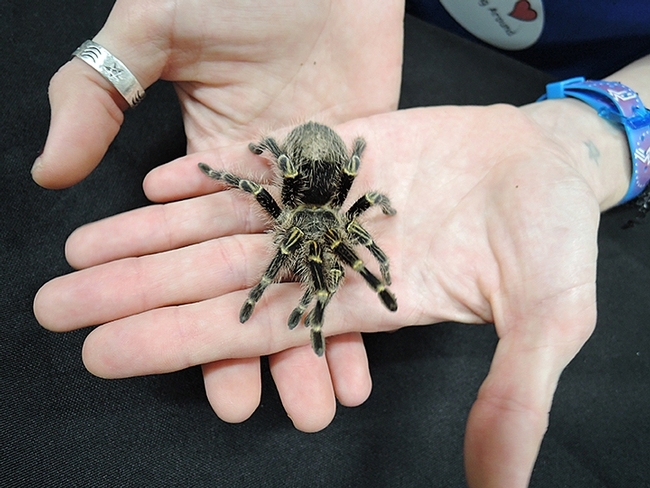
Meet Coco McFluffin, a resident tarantula in the Bohart Museum's live petting zoo. It's a Chaco golden knee tarantula (Grammostola pulchripes), native to Paraguay and Argentina. (Photo by Kathy Keatley Garvey)
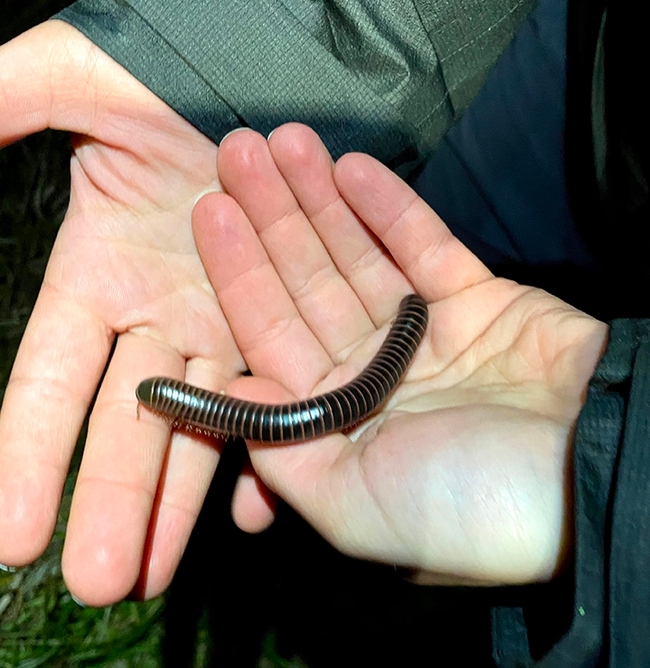
A close-up of a millipede from the Jason Bond lab, UC Davis. (Photo by Kathy Keatley Garvey)
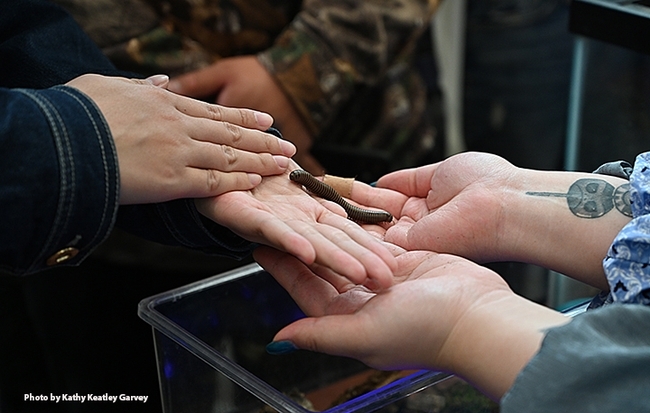
It's a mixture of hands and one millipede as a transfer occurs. (Photo by Kathy Keatley Garvey)

